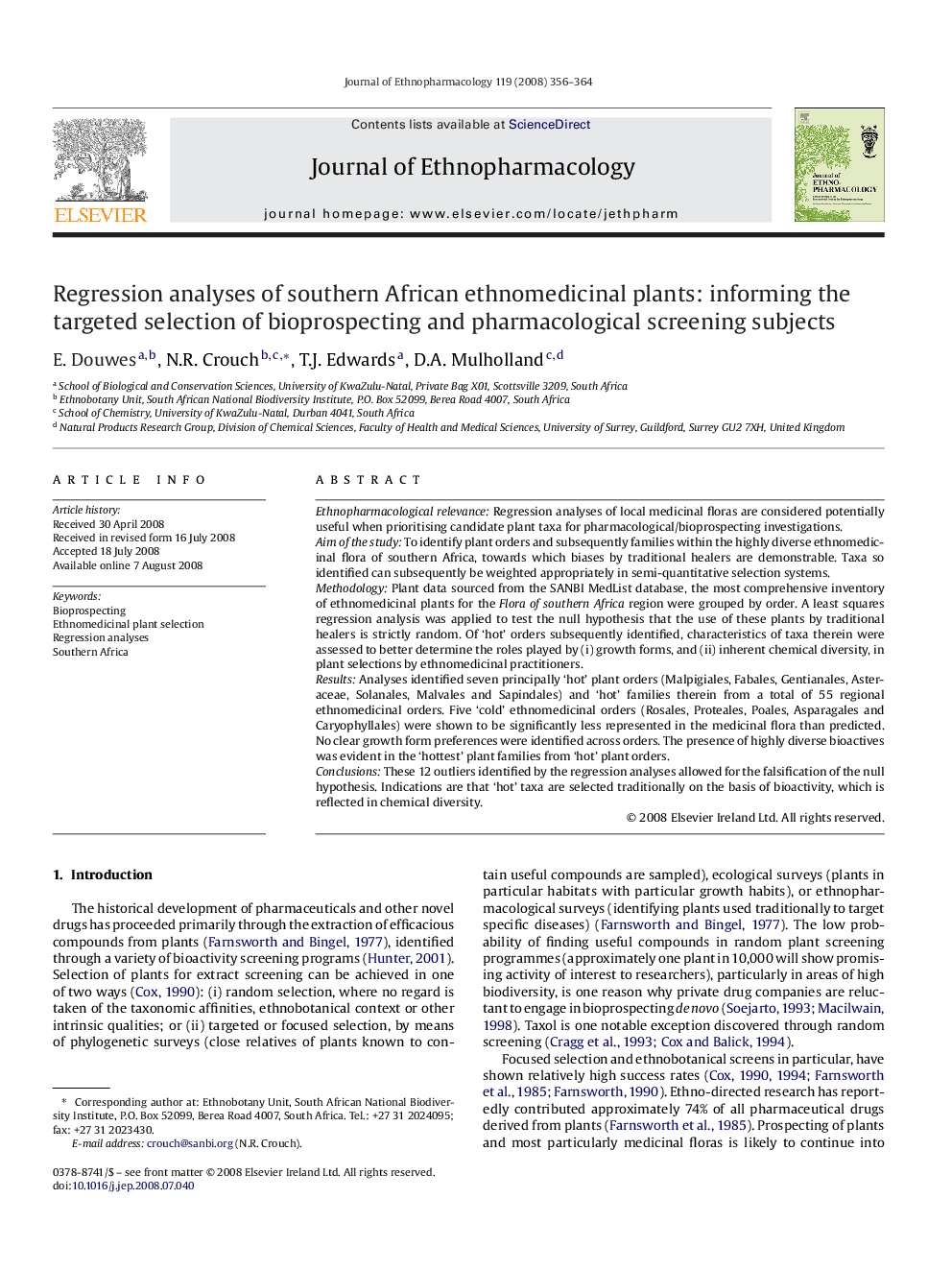| کد مقاله | کد نشریه | سال انتشار | مقاله انگلیسی | نسخه تمام متن |
|---|---|---|---|---|
| 2547604 | 1124063 | 2008 | 9 صفحه PDF | دانلود رایگان |

Ethnopharmacological relevanceRegression analyses of local medicinal floras are considered potentially useful when prioritising candidate plant taxa for pharmacological/bioprospecting investigations.Aim of the studyTo identify plant orders and subsequently families within the highly diverse ethnomedicinal flora of southern Africa, towards which biases by traditional healers are demonstrable. Taxa so identified can subsequently be weighted appropriately in semi-quantitative selection systems.MethodologyPlant data sourced from the SANBI MedList database, the most comprehensive inventory of ethnomedicinal plants for the Flora of southern Africa region were grouped by order. A least squares regression analysis was applied to test the null hypothesis that the use of these plants by traditional healers is strictly random. Of ‘hot’ orders subsequently identified, characteristics of taxa therein were assessed to better determine the roles played by (i) growth forms, and (ii) inherent chemical diversity, in plant selections by ethnomedicinal practitioners.ResultsAnalyses identified seven principally ‘hot’ plant orders (Malpigiales, Fabales, Gentianales, Asteraceae, Solanales, Malvales and Sapindales) and ‘hot’ families therein from a total of 55 regional ethnomedicinal orders. Five ‘cold’ ethnomedicinal orders (Rosales, Proteales, Poales, Asparagales and Caryophyllales) were shown to be significantly less represented in the medicinal flora than predicted. No clear growth form preferences were identified across orders. The presence of highly diverse bioactives was evident in the ‘hottest’ plant families from ‘hot’ plant orders.ConclusionsThese 12 outliers identified by the regression analyses allowed for the falsification of the null hypothesis. Indications are that ‘hot’ taxa are selected traditionally on the basis of bioactivity, which is reflected in chemical diversity.
Journal: Journal of Ethnopharmacology - Volume 119, Issue 3, 28 October 2008, Pages 356–364